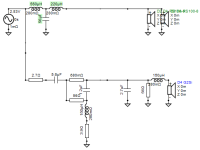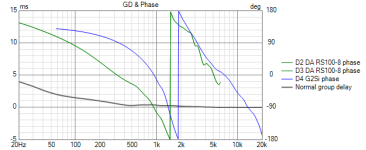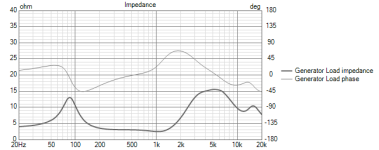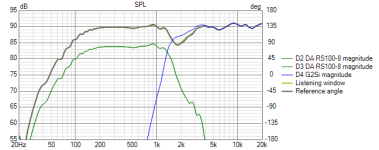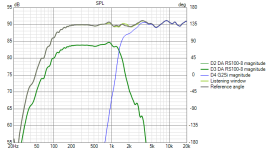Hello everyone! Brand new to the scene and excited to dive in. I've spent the last 2 months reading and re-reading Intro to Basic Electronics, Speaker Building 201 & The LDC 8th edition volumes I & II. I have also been learning Vituix CAD and playing with Xmachina. My next steps will be getting testing equipment. Any recommendations on a cost effective setup would be great! I have a good selection of old speakers from brands of varying quality that I plan on disassembling to use the drivers for experimentation. I have been playing with the half space responses of 2 MTM configurations. Both use the Dayton RS100-8 mid bass and I have experimented with the Morel CAT 308 dome and Aurum Cantus G2Si ribbon tweeters. After completing a few test builds with the drivers I currently have, these will most likely be my first real shot at a quality loudspeakers. I am currently using Cambridge Soundworks and Triad MTM speakers scattered around my house that I can use for reference. I understand that the half space responses are not indicative of what I will be working with in reality. I am going play with the simulated diffraction in Vituix now as practice but I have some concerns with my current designs that I could use some direction on. For both alignments I have good frequency response and the phase and group delay seem appropriate. My concern lies with the impedance. The first alignment using the G2Si tweeter shown below dips to 2.8 Ohm and hangs at 3 Ohm from 200-1200 Hz low point. The second alignment using Cat 308 in my next post runs 3 Ohm from basically 200-2000 Hz. The second alignment is more consistent and has far less circuitry but I would like to try and build both. In both configurations the problem seems to stem from the large parallel capacitor in the low pass section. However adjusting this drastically effects FR. I welcome any feedback on these designs! My questions are as follows.
Are these impedances going to cause problems for a lower end amplifier?
Is there an easy work around to raise the total impedance that wont affect efficiency to horribly?
How does the load phase affect the impedance? The peaks in phase correlate to higher impedance levels, when the impedance is at its lowest the phase is close to 0. This means it is mostly resistive correct? Does this present less of an issue for the amp?
How does the acoustic phase look? Configuration 1 is 90 degrees out of phase in the low pass stop band. Is this ok?
If I invert the tweeter I get a 6 dB drop at the crossover. Is that steep enough?
Does any of this matter as it uses half space responses not real world measurements?
Thank you all in advance! So glad there is a place where I can have access to the wealth of knowledge you all have to offer. I attached the Vituix project file as well as pictures of all the relevant graphs. Alignment 1 is crossover variant 1. and 2 is 2
Are these impedances going to cause problems for a lower end amplifier?
Is there an easy work around to raise the total impedance that wont affect efficiency to horribly?
How does the load phase affect the impedance? The peaks in phase correlate to higher impedance levels, when the impedance is at its lowest the phase is close to 0. This means it is mostly resistive correct? Does this present less of an issue for the amp?
How does the acoustic phase look? Configuration 1 is 90 degrees out of phase in the low pass stop band. Is this ok?
If I invert the tweeter I get a 6 dB drop at the crossover. Is that steep enough?
Does any of this matter as it uses half space responses not real world measurements?
Thank you all in advance! So glad there is a place where I can have access to the wealth of knowledge you all have to offer. I attached the Vituix project file as well as pictures of all the relevant graphs. Alignment 1 is crossover variant 1. and 2 is 2
Attachments
Welcome to diyAudio.
FIrst lesson, ask your question pn the MultiWay subform ;^)
dave
FIrst lesson, ask your question pn the MultiWay subform ;^)
dave
